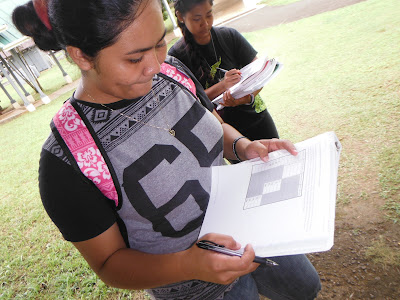Acceleration of gravity

Laboratory three investigated the acceleration of gravity using timing of a falling time. Drop distances were 0, 100, 200, 300, 400, and 500 cm. Students are instructed to make five drops at each height and use the median value. This continues to produce better results than the original 2007 format for the laboratory with single drops every 20 cm. That the data produced a line similar to the acceleration curve generated on Monday, the half arc, helped, as noted last term . Pedagogically the linear acceleration (without the deceleration and resulting parabola on a time versus distance graph) works better for the material this week. Wednesday is then spent showing how velocity is changing in the Monday data and the resulting acceleration. Wednesday now needs some work: there is an opportunity in there somewhere to break up the students into groups and have them engage in a more exploratory approach to determining the velocity changes along the curve. A more inquiry oriented approach. ...





